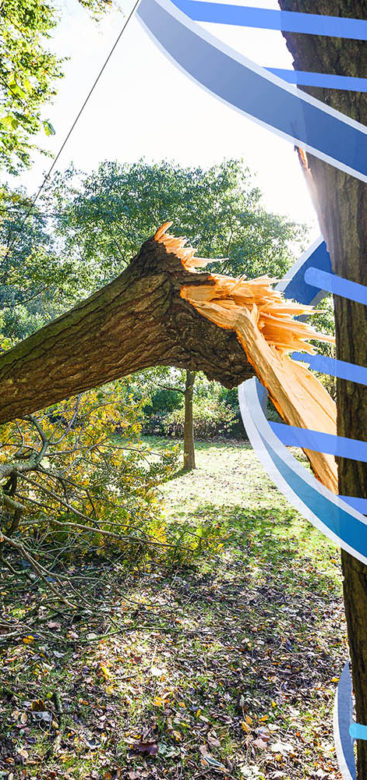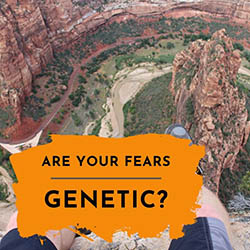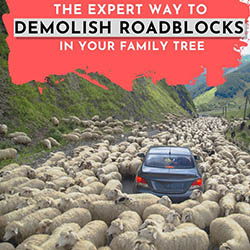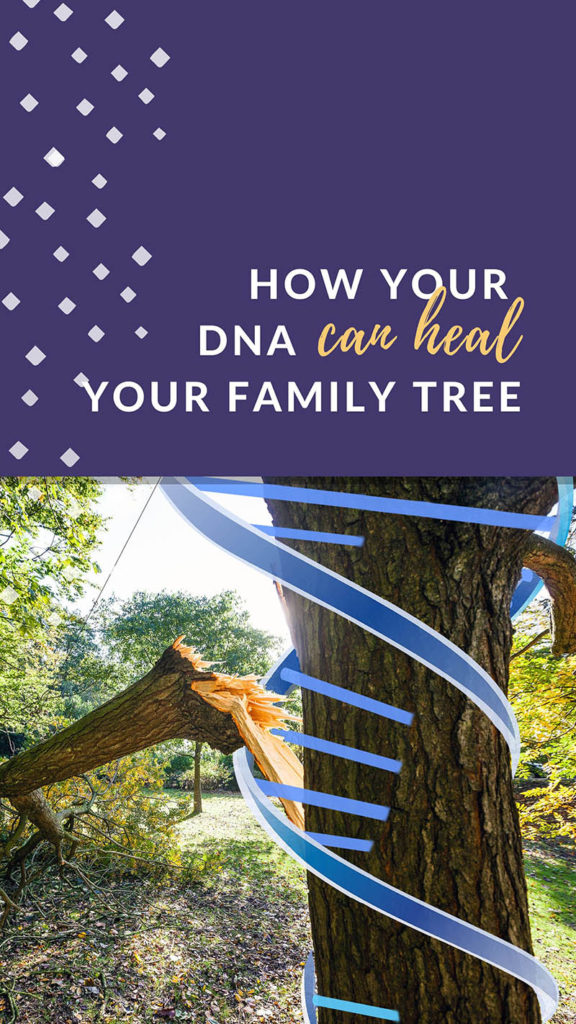
For as long as people have struggled through old records to create their family tree, the answers have actually been inside them–in their DNA.
And it’s only been in the last 20 years that we’ve been able to harness that DNA so it can reveal amazing stories.
You see, sometimes the historical records that we’ve relied on to create our family trees are destroyed or lost–or were never even created. But our DNA can tell us about family relationships that documents could never prove.
I know the power of this first hand. Here’s how fate and DNA bridged a gap in my family tree:
An unexpected email (My Story)
I went to work for Ancestry.com’s publishing department in summer 2004. As part of my job, I wrote magazine and newsletter articles that ended up in the website’s online library. My name, then Anastasia Sutherland, was attached to all of them.
Sutherland is an uncommon enough surname in the US that people with ties to it take notice. So, Ralph Lyle’s spring 2005 email asking about my Sutherland line was just like many inquiries I’d received—and brushed of—in the past. “No,” was my usual response, “my Sutherlands left Edinburgh, Scotland, in the early 1840s, then came through Illinois to Texas and Missouri.”
Ralph Lyle, however, was not deterred: “I think I tie into your Sutherlands,” he wrote back. He’d found a family tree on FamilySearch that was submitted by a Ralph Sutherland. The information in this tree matched information about the Sutherland line Ralph Lyle thought he connected with. Was I, Ralph Lyle wanted to know, related to Ralph Sutherland?
An estranged family (Ralph Lyle’s Story)
Ralph Lyle had spent over a decade seeking his grandfather Charles Lyle’s origins. With only suspect facts and Charles’s stories to go on, Ralph Lyle spent hours tediously researching family branches that never connected to his tree.
Eventually Ralph determined that grandfather Charles Lyle was born Charles Sutherland, the son of James Sutherland. In 1912, for reasons unknown, Charles ran away from his Iowa home, changed his surname to Lyle, and permanently severed ties with his Sutherland family.
In spring 2005, Ralph Lyle spotted my name and email address attached to a newsletter article. Realizing the chances were slim that I was connected to his Sutherland line, Ralph sent me an email anyway.
Some very odd coincidences (My Story)
Ralph Lyle’s second email—one riddled with odd coincidences—caught my attention. The message started by asking if I knew Ralph Sutherland.
Well, yes, as a matter of fact, I do know him.
You see, Ralph “Monty” Sutherland is my father!
Ralph Lyle also stated that he lived in the small California town—which just happens to be the same little town where I grew up. It’s also the town where we lived in the 1980s when my dad submitted the information to (what would eventually become) FamilySearch. And, strangely enough, this town isn’t where any of my Sutherlands or Ralph Lyle’s Sutherlands had ever lived.
Even more amazing, Ralph’s youngest son and I attended the same elementary school—at the same time. That night I found the son’s picture in my old, dusty yearbook.
His family tree DNA offers a clue (Ralph Lyle’s Story)
Hoping to verify that he really was descended from the Sutherland family that his research pointed to, Ralph Lyle decided to use his results from a previous family history/family tree DNA test to search an online DNA database.
The results of the DNA database search removed Ralph’s lineage doubt: His family tree’s DNA matched perfectly with someone else’s DNA in that DNA database.
That perfect match meant that Ralph and this other person were related by blood—and more specifically on their direct paternal line (that’s their father’s father’s father’s line). In other words, at some point in the past several generations, Ralph and the DNA donor have the same (many-times) great-grandfather.
The online DNA database wouldn’t reveal the matching DNA donor’s name but did tell Ralph that the matching individual was a direct descendant of John G. Sutherland. Ralph recognized this name—it was his great-grandfather James Sutherland’s younger brother.
Ralph’s next question for me–“Did your father ever take a DNA test?”
A twist of DNA fate (Monty Sutherland’s Story)
Around 2000, my father, Ralph “Monty” Sutherland, a family history hobbyist for over 25 years, heard that a family tree DNA database project would be collecting blood samples at a local Southern Oregon hospital.
Interested in all things family history, Monty donated a blood sample and a family tree to the database. His family tree included John G. Sutherland.
After that, Monty just sort of forgot about the DNA project because, at the time, the information from it just didn’t mean much to him or his family history pursuits.
Making the connection (My Story)
Initially I told Ralph Lyle that I didn’t think my father had taken a family tree DNA test. Then I asked my dad, and a few days later, I sent a very different message to Ralph: “I just talked to my dad, and he took a DNA test around 2000.”
Bingo! Ralph had found his unknown DNA match from that online database.
Now, to be 100% honest, I haven’t spent a lot of time researching the Sutherland line, so I couldn’t be much more help to Ralph. So, I forwarded Ralph’s emails to my dad.
Their family tree’s DNA seals the deal (Monty Sutherland’s Story)
Monty, my dad, sat on Ralph Lyle’s emails for over a month. When he finally responded to Ralph, Monty was careful. “I’m cautious about meeting people through the Internet sight unseen,” says Monty. “You don’t know who you’re talking to.”
After a few emails, however, Monty realized Ralph was legit. “I was the only one who matched Ralph’s DNA exactly,” says Monty. “The problem was we had different surnames.” But, beyond that, Ralph’s connection with the Sutherland family “all added up.”
And, as luck had it, Monty was planning a trip that would take him right through Ralph’s current hometown–Monty’s former hometown–in California. Two months later Monty, Ralph, and their wives met for the first time over dinner at Ralph Lyle’s home.
Meeting up half a world away (My Story)
About a year later, in April 2006, I was preparing for a trip to Edinburgh, Scotland, where the Sutherlands lived before coming to the United States. A few weeks before departing, I emailed Ralph Lyle and offered to do a bit of family history while there.
He responded with astonishing news: he was in the process of planning a Scotland trip and would be in Edinburgh at the same time!
On a June morning in 2006, Ralph Lyle and I met for the first time on Edinburgh’s Royal Mile.
We visited the Edinburgh church where David Sutherland, our ancestor who left Scotland for America, was christened, found a likely candidate for another ancestor’s burial plot, and strolled down Grassmarket where our Sutherlands once lived.
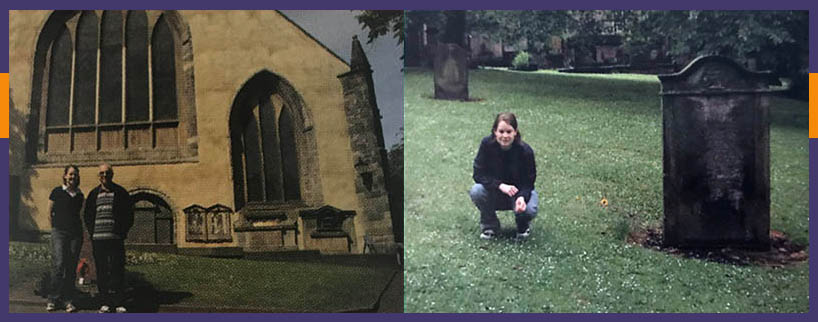
I have to admit, meeting this long lost third cousin once removed didn’t feel “magical” or “serendipitous.” Instead, it was comfortable, like catching up with an uncle.
Let’s talk about your family tree’s DNA
What are the chances that Ralph “Monty” Sutherland and Ralph Lyle (Sutherland)—third cousins who share the same first name, possess different last names, and have convoluted family histories that span the country—would meet each other through their family tree’s DNA?
It 100% depends on the size of the database being searched and the type of DNA being tested.
I’m not going to go in to the specifics of family tree DNA testing right now (although it’s a fascinating topic for another time). However, here are a few comparison points:
- Back in 2005, aka the “Dark Ages of DNA,” the DNA database Ralph Lyle used to find Monty Sutherland contained DNA data from about 14,000 men worldwide.
- Today’s online DNA database contain millions of DNA samples from men and women worldwide. And these services make it easy to contact DNA matches, while still maintaining user privacy.
- In 2005, the main DNA test used for family history tested the Y-chromosome, which only men have. So only men could be tested. That test offered insights about only a direct paternal line – so a man’s father’s father’s father’s father’s father’s line.
- Today, family tree DNA tests look at various kinds of DNA, can be taken by women or men, and offer information about and results from all parts of a person’s family tree.
The chances of you finding family tree connections through DNA have literally never been higher. And, personally, I think having your DNA tested is a good way to broaden your family tree building.
There are many online DNA services, two of the largest are FamilyTreeDNA and AncestryDNA (I am NOT affiliated with either company and get no compensation for mentioning or linking to either).
If you do want to take a DNA test, I suggest reading reviews on the companies before purchasing. Also, spend time researching the kinds of tests being offered, the information each test can provide, and how that info can help you achieve your family tree goals.
Serendipity?
Let’s go back to the chances that Monty and Ralph would meet each other through DNA in 2005.
There were only 14,000 DNA samples in the database Ralph used. Then factor in the odds that I would take a job writing for Ancestry.com and that Ralph Lyle would happen upon something I wrote and decide to take the chance on a last name shared by, as of 2002, more than 13,000 households in the US.
I’m not a gambling woman, but even “slim” sounds like better odds.
Read Next
An earlier version of this article, originally titled “DNA’s Fated Twist,” appeared in the September/October 2006 issue of Ancestry Magazine.
